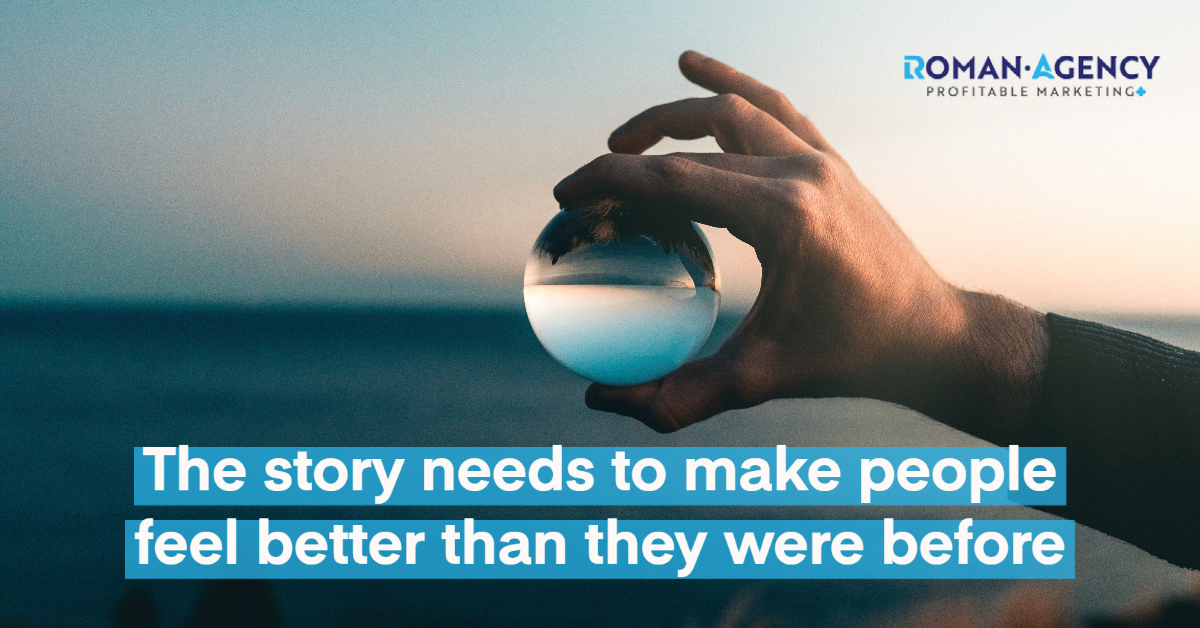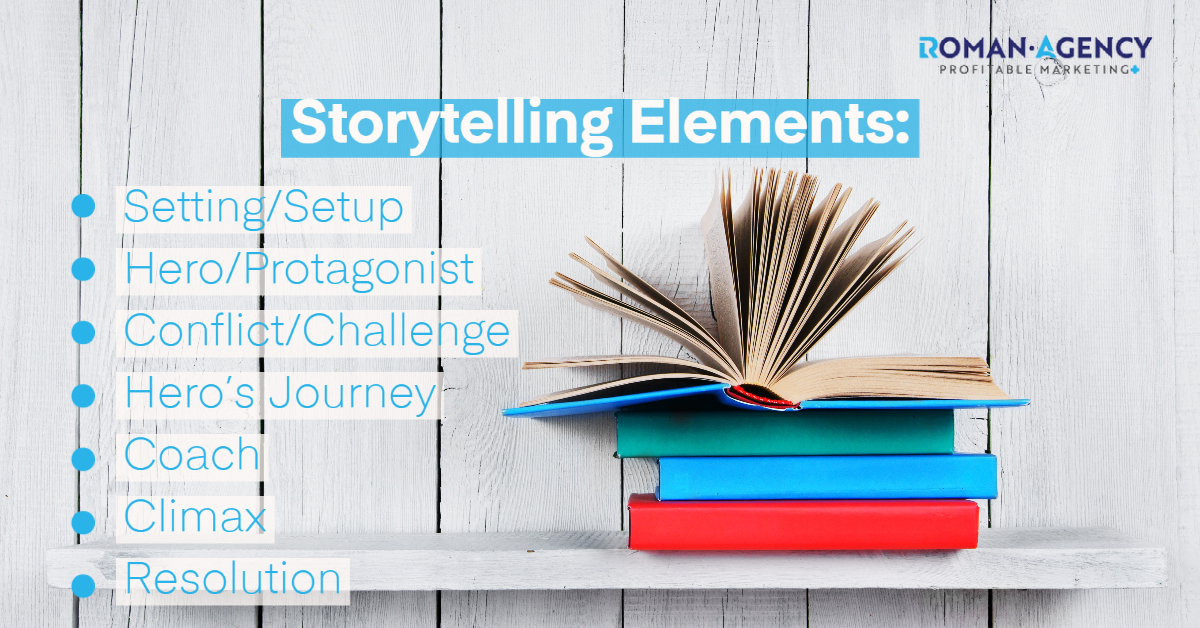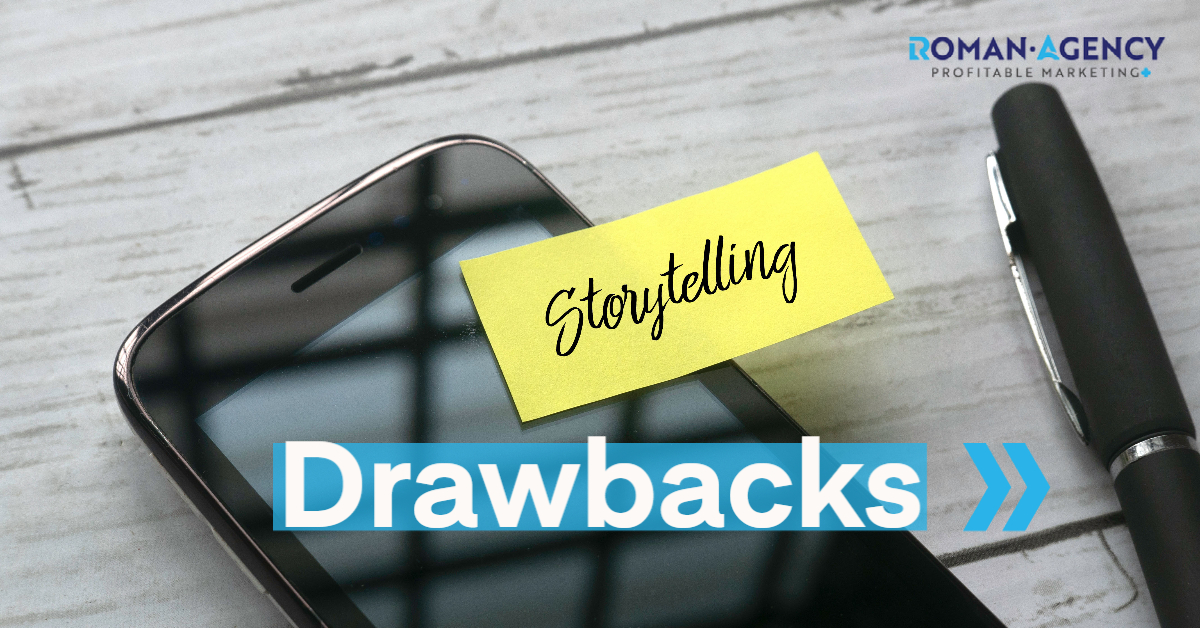“I believe the future of marketing is RELATABILITY, especially in our noisy digital world. To be relatable, you must be authentic and engaged, and there’s no better way to do that than telling a good story!”
Brian Fanzo
Storytelling is NOT the Best
As marketers, we know that no one marketing channel is the best. All marketing channels have their strengths and weaknesses. Choosing the right marketing mix depends on the context of the brand, campaign, and target audience.
Storytelling is not an ultimate marketing channel, but it is effective and should be included in a long-term care brand’s marketing mix. In long-term care (LTC), there is an increased challenge in implementing storytelling: privacy considerations, client’s hesitancy, and sensitivity around the subject.
Goals of Storytelling

Although it may be challenging, incorporating storytelling alongside traditional scientific facts to showcase the effectiveness of care is worth considering.
Let’s look at the ideal case scenario from a marketing point of view and examine how we can implement it in long-term care.
Efficacy and Benefits Copy
“Situated in an excellent location and boasting a team of experienced staff, our senior living community is a top choice for residents in [X]. By becoming part of our community, you can look forward to a wealth of benefits [benefit 1], [benefit 2], [benefit 3].”
Pro: It’s precise and concise. All relevant facts on efficacy and benefits fit within a few lines.
Con: It is not relatable for some clients as it doesn’t account for an existing emotional state or paint a picture of a future life.
With storytelling, we want to:
- Relate to prospective clients
- Tap into emotions to connect. In the context of LCT, those are usually:
- Denial
- Loneliness
- Despair
- Devastation
- Hope
- Trust
- Happiness
- Keep viewers engaged and interested
- Show the solution
- Suggest a brighter future similar to the protagonist.
The bottom line is that the story needs to make people feel better than they were before.

In this case, it can be as simple as this example.
Storytelling Copy
“My name is John. A few years ago, I realized that I was starting to need help with some daily tasks due to [reason 1] and [reason 2]. It affected my mood, making me feel isolated. I was at a crossroads with no one to turn to for guidance. During my search for help, I discovered [senior living facility]. Upon contacting their team, I felt more assured about my decision. For instance, with a balanced diet, regular exercise, and the right care, I could enhance my quality of future life. This possibility gave me a new lease on life. Once I decided to move to the facility, I felt an immediate boost in my confidence. Preparing the papers needed to move there only took a few days. As I arrived, I was immediately given access to [benefit 1], [benefit 2], and [benefit 3]. After just a week, I could feel the positive impact of the supportive environment on my well-being. Above all, I regained control over my life instead of being governed by my loneliness. If you are going through anything similar, I strongly recommend you consider this [senior living facility] as your next home.”
Pro: Relatable story to potential clients that still covers all the benefits of a long-term care facility. Its main selling point is the potential for a better future.
Cons: It’s longer, and you may have increased activation costs, although your story can better catch clients’ attention for an extended period. It can seem inauthentic if done incorrectly or assume all clients feel the same.
Steps to Create a Long-Term Care Story
Define Storytelling Goals and Performance KPIs
All marketing resources (budget, staff time, and energy) are limited. Savvy marketers will utilize the resources for the highest ROI by focusing on what works best. Storytelling is labour-intensive, so before you embark on this journey, you must be clear about your goals and how to measure success. You already have a social media posting, but you will be doing too much work without this first crucial step.
Build a scalable “Find a Story” process
An award-winning investigative reporter might spend 6 to 12 months researching a great story. Then, you must visit places, talk to people and find the hook to the story. Creating an authentic storytelling campaign will take a lot of time to execute if you start from scratch because you lack facts.
The solution is to have a scalable process to gather your “facts” before needing them. Then, if this process proves efficient, it can also help other marketing channels.
In LTC marketing, the storytellers are usually clearly defined, and you can implement a feedback capture system for each possible protagonist.
- Clients (seniors): Very typical Hero journey from conflict to the solution:
-
-
- Do exit interviews or surveys
- Ask for a review
- Ask if they would document their story in written, audio, or video format.
-
- Loved ones (relatives): In our opinion, less utilized protagonists in LTC stories:
-
-
- Get them involved in exit interviews
- Ask for a review as well
- Ask if they would document their story in written, audio, or video format.
-
- LTC facility’s staff
-
- Encourage documenting clients’ stories in written, audio, or video format
- Allow your staff to post their reflections on owned media assets using their real name. The benefit to them is increased authority online.
Must-Have Storytelling Elements

The final format of your story will define how much detail you flesh out within the content. Still, most stories will follow this format.
Setting/Setup
The setting of a story is critical to understanding a character’s background and developing empathy toward the protagonist.
Protagonist (Hero)
The protagonist might tell their own story (easy to connect) or tell it from the point of view of other characters (loved ones, nurses, etc.)
Conflict/Challenge
LTC storytelling usually involves the age condition and its effect on life. Since we are trying to connect the characters on an emotional level, limit the use of scientific terms.
Hero’s Journey
The protagonist must undergo a journey and resolve a conflict to become a Hero. In this part of the story, you flesh out how the LTC provider and protagonists found each other.
Coach
Every quintessential Hero has a coach. For example, Moses had Aaron, Luke, Yoda, and Rocky had Mick. The typical long-term care provider role is the Coach, but you can use an alternative approach to nudge the Hero to take proactive action.
Climax
This part is where the whole story comes together, and by keeping viewers attention, this is their reward. In the LTC setting, this would be the care and its effects.
Resolution
Viewers need closure (a Resolution) after the Climax. We usually find the Hero facing the same situation as at the story’s beginning, but they are a different person now.
When it comes to long-term care, it’s essential for seniors to be able to handle daily tasks, interact with others, and receive vital medical assistance. In essence, they return to their former self, and it’s this future we want viewers to imagine.
You Must Keep People’s Interest
While we live in an age of TikTok and a 7-second attention span, storytelling is naturally longer than the regular ad copy format. Therefore, you must proactively build hooks into the story to keep your listeners engaged.
You can utilize such techniques as a cold opening, unexpected facts, and emotional appeal. The key is to remember that most listeners don’t want to read, listen or view long content. Yes, many will binge-watch a reality show about police in Wisconsin, but it must be formatted right, and this is where “Art” meets the science.

Activating a story
An important question is how to activate your story. The format will define your ultimate cost of editing and distributing content.
The typical range of possibilities:
-
Commercials
Be aware of the time limit of 30-to-60 seconds and the challenge of telling an exciting story in that time frame. One of the solutions is to create a teaser that leads to longer-form content on your website.
-
Client Testimonials
Website videos are the most common and practical format. However, you should still include written testimonials for those who prefer to read or need a nudge to see the story. The challenge is that clients may be hesitant to go on the record. One of the ways to overcome it is to use actors to recreate written statements.
-
Journal Features
Create a monthly/weekly feature where your staff journals their clients’ stories. This content can be distributed to sites like Medium.com and is easier to obtain than client content. Make sure that the final story passes all of the privacy checks.
-
User-generated content (UGC)
This method is the most cost-effective way to get storytelling content, whether from former clients’ property reviews or positive social media posts. These days, most people have their own social media following, so you can get an extra reach when they share their stories.
Drawbacks of Storytelling

Increased cost compared to typical copywriting
If you have read this far, you know that authentic storytelling is not something you slap together and hope it sticks. Instead, it requires finding the story, writing an exciting script, dealing with formats, and bringing people to your story. Compared to that, running a search Google Ads campaign is a breeze.
Digital storytelling can be challenging to manage
When you work with seniors, their relatives, nurses, and other staff, you will discover that it can be a unique challenge to keep them all motivated, especially in the long term. Therefore, your “Find a Story” process needs to be scalable.
Your first story might not get heard by people
The first time you tell the tale, it may only reach a handful of people. Mainly if you don’t have an existing audience or the story is intended for outside prospects. Be prepared if, after much effort in crafting your story, not many listen. But, as more people discover your valuable content, they will encourage others to explore your message. It takes time, and you must be patient.
People can take a different meaning away from your story
Although a digital storytelling effort aims to create a specific, measurable outcome that applies to all listeners, the reality of telling these tales can be very different. People can hear something very different because of their experiences and perspectives.
There is only one chance to hook the listener
You do not have much time to make a positive first impression either. Most listeners take 7 seconds max to determine if your story offers them any value. Then they take another 20 seconds to decide whether they made the correct choice.
The Bottom line
Storytelling in long-term care marketing has its place in the marketing mix. Creating a captivating and authentic story is challenging, but the results will be worthwhile. As a result, your brand will have greater emotional appeal and trustworthiness.
Don’t do it half-heartedly because that won’t work. If you rush through the creation process or don’t have the patience to let the momentum build, you may be unable to maximize the potential gains available with storytelling.
If you need help crafting and distributing a story for your LTC brand, do not hesitate to book a call with us.
Last Updated: June 28, 2023


